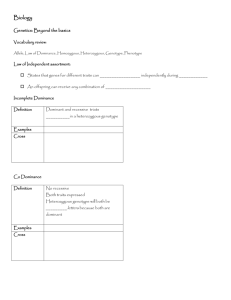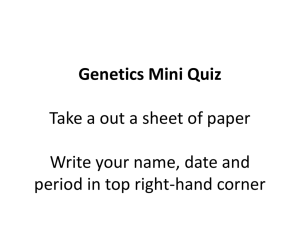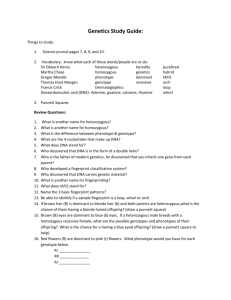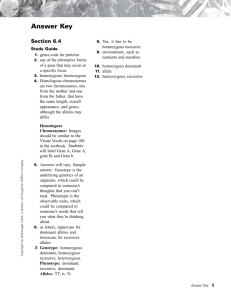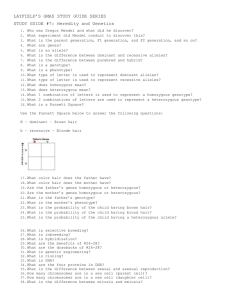GENETICS QUIZ STUDY GUIDE Historical Contributions to the study of Genetics:
advertisement
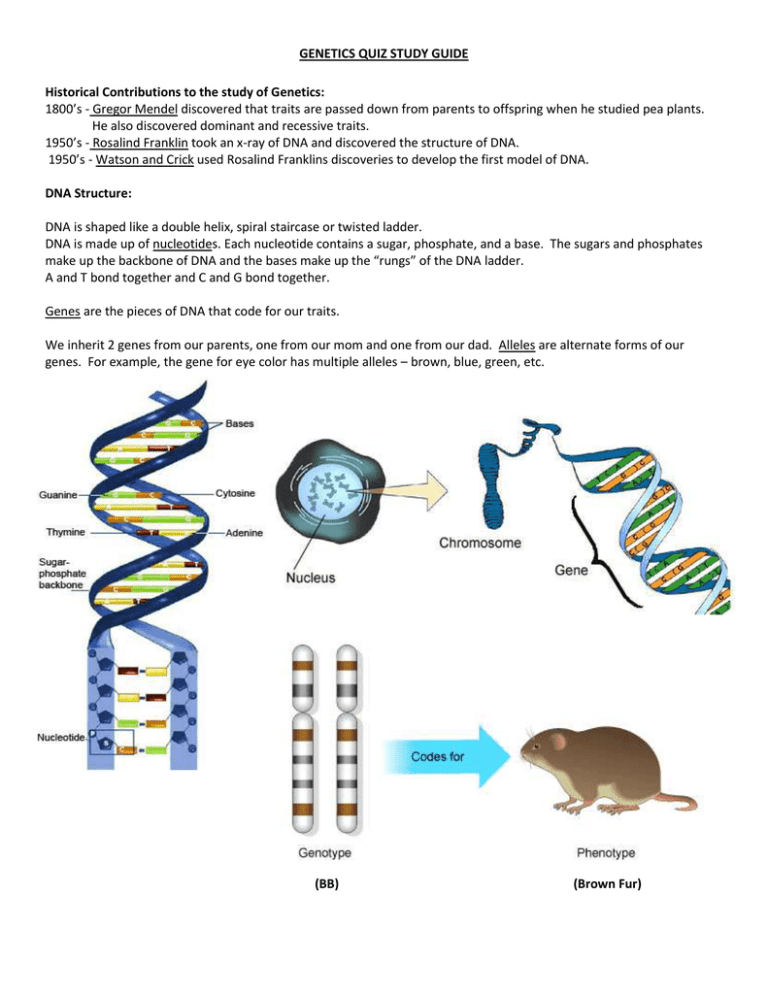
GENETICS QUIZ STUDY GUIDE Historical Contributions to the study of Genetics: 1800’s - Gregor Mendel discovered that traits are passed down from parents to offspring when he studied pea plants. He also discovered dominant and recessive traits. 1950’s - Rosalind Franklin took an x-ray of DNA and discovered the structure of DNA. 1950’s - Watson and Crick used Rosalind Franklins discoveries to develop the first model of DNA. DNA Structure: DNA is shaped like a double helix, spiral staircase or twisted ladder. DNA is made up of nucleotides. Each nucleotide contains a sugar, phosphate, and a base. The sugars and phosphates make up the backbone of DNA and the bases make up the “rungs” of the DNA ladder. A and T bond together and C and G bond together. Genes are the pieces of DNA that code for our traits. We inherit 2 genes from our parents, one from our mom and one from our dad. Alleles are alternate forms of our genes. For example, the gene for eye color has multiple alleles – brown, blue, green, etc. (BB) (Brown Fur) Patterns of Inheritance – Genotypes and Phenotypes: Dominant Alleles are shown by using large letters or uppercase D. Recessive alleles are shown by using small letters or lowercase d. Genotype: type of genes you inherit, for example: DD, Dd or dd Phenotype: is what the trait you inherit physically looks like, for example; brown, blue, or green eyes. Homozygous or Purebred - Genotypes that have two of the same alleles - either dominant (DD) or recessive (dd). Heterozygous or Hybrid– Genotypes that include 2 different alleles, (Dd). Genotype Examples: *Genotypes can be homozygous (purepred) or heterozygous (hybrid). Ex: homozygous = BB & bb heterozygous = Bb *If someone has brown eyes, they may or may not be carrying a gene for blue eyes. Their genotype could be BB (homozygous dominant) or Bb (heterozygous) *If someone has blue eyes, their genotype would have to be bb (homozygous recessive).
